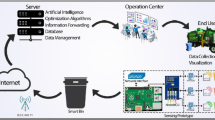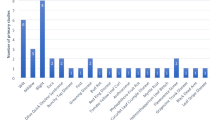Abstract
Nowadays, agriculture faces several challenges in ensuring food safety. Water scarcity is one of the main challenges facing farmers in the rainfed agriculture sector, especially during the summer, leading to severe economic and farm losses. Internet of Things (IoT) has recently become a potentially revolutionary approach in smart farming that provides many innovative applications. In this research, we suggest an Edge-IoTCloud platform based on a deep learning methodology for monitoring and predicting farmers’ ability to satisfy crop water demands when there is insufficient rainfall. The smart farming system allows collecting data about such important physical phenomena as soil moisture, air temperature, air humidity, water level, water flow, and luminous intensity. The latter is required for reliable and cost-efficient irrigation solutions that will be utilized to compute the necessary water quantity using Rawls and Turq formulas. Cloud services have been chosen for storing and processing significant amounts of data generated by sensors to produce a learning model that will be a basis for predicting future measurements using artificial intelligence and DL techniques. The preliminary results revelated that our proposal is a good starting point for developing low-cost smart farming for smallholder farmers to help them make better decisions.






















Similar content being viewed by others
Data Availability
Data transparency.
Code Availability
Software application or custom code.
References
Gutiérrez, J., Villa-Medina, J. F., Nieto-Garibay, A., & Porta-Gandara, M. Á. (2014). Automated irrigation system based on wireless sensor network and GPRS module. IEEE Transactions on Instrumentation and Measurement, 63(1), 166–176. https://doi.org/10.1109/TIM.2013.2276487
García, L., Parra, L., Jimenez, J. M., Lloret, J., & Lorenz, P. (2020). IoT-based smart irrigation systems: An overview on the recent trends on sensors and IoT systems for irrigation in precision agriculture. Sensors., 20(4), 1042. https://doi.org/10.3390/s20041042
Elijah, O., Rahman, T. A., Orikumhi, I., Leow, C. Y., & Hindia, M. H. D. N. (2018). An overview of internet of things (IoT) and data analytics in agriculture: Benefits and challenges. IEEE Internet of Things Journal, 5(5), 3758–3773. https://doi.org/10.1109/jiot.2018.2844296
Dahane, A., & Berrached, N. E. (2019). Mobile wireless and sensor. A clustering algorithm for energy efficiency and safety. Apple Academic Press.
Dahane, A., Kechar, B., Meddah. Y & Benabdellah. O. (2019). Automated irrigation management platform using a wireless sensor network. In Sixth international conference on internet of things: systems, management and security (IOTSMS), Granada, Spain, pp. 610–615. https://doi.org/10.1109/IOTSMS48152.2019.8939170
Wang, X., Yang, W., Wheaton, A., Cooley, N., & Moran, B. (2010). Efficient registration of optical and IR images for automatic plant water stress assessment. Computers and Electronics in Agriculture, 74(2), 230–237. https://doi.org/10.1016/j.compag.2010.08.004
Wang, X., & Qi, Q., (2011). Design and realization of precision agriculture information system based on 5S. In Proc.—19th international conference on geoinformatics, Shanghai, pp. 1–4. https://doi.org/10.1109/GeoInformatics.2011.5980847
Lu, B., Dao, P. D., Liu, J., He, Y., & Shang, J. (2020). Recent advances of hyperspectral imaging technology and applications in agriculture. Remote Sensing, 12(16), 2659. https://doi.org/10.3390/rs12162659
Roopaei, M., Rad, P., & Choo, K. (2017). Cloud of things in smart agriculture: intelligent irrigation monitoring by thermal imaging. IEEE Cloud Computing, 4(1), 10–15. https://doi.org/10.1109/MCC.2017.5
Goap, A., Sharma, D., Shukla, A. K., & Rama Krishna, C. (2018). An IoT based smart irrigation management system using Machine learning and open source technologies. Computers and Electronics in Agriculture, 155, 41–49. https://doi.org/10.1016/j.compag.2018.09.040
Zaremba, W., Sutskever, I & Vinyals, O. (2014). Recurrent neural network regularization. https://arxiv.org/1409.2329
Ritsema, C. J., et al. (2009). A new wireless underground network system for continuous monitoring of soil water contents. Water Resources Research Journal, 45(4), 1–9. https://doi.org/10.1029/2008WR007071
Akyildiz, I. F., & Stuntebeck, E. P. (2006). Wireless underground sensor networks: Research challenges,". Ad Hoc Networks, 4(6), 669–686. https://doi.org/10.1016/j.adhoc.2006.04.003
Vuran, M. C., Salam, A., Wong, R., & Irmak, S. (2018). Internet of underground things in precision agriculture: Architecture and technology aspects. Ad Hoc Networks, 81, 160–173. https://doi.org/10.1016/j.adhoc.2018.07.017
Papcun, P., Kajati, E., Cupkova, D., Mocnej, J., Miskuf, M., & Zolotova, I. (2019). Edge-enabled IoT gateway criteria selection and evaluation. Concurrency Commutate Pract Exper. https://doi.org/10.1002/cpe.5219
Gupta, M., Abdelsalam, M., Khorsandroo, S., & Mittal, S. (2020). Security and privacy in smart farming: Challenges and opportunities. IEEE Access, 8, 34564–34584. https://doi.org/10.1109/ACCESS.2020.2975142
Srivastava, A., & Das, D. K. (2021). A comprehensive review on the application of internet of thing (IoT) in smart agriculture. Wireless Personal Communications. https://doi.org/10.1007/s11277-021-08970-7
Dos Santos, L. M., Ferraz, G. A. E. S., Barbosa, B. D. S., et al. (2020). Biophysical parameters of coffee crop estimated by UAV RGB images. Precision Agriculture, 21, 1227–1241. https://doi.org/10.1007/s11119-020-09716-4
Virnodkar, S. S., Pachghare, V. K., Patil, V. C., et al. (2020). Remote sensing and machine learning for crop water stress determination in various crops: A critical review. Precision Agriculture, 21, 1121–1155. https://doi.org/10.1007/s11119-020-09711-9
Gerard, S: E-agriculture in action: drones for agriculture. Food and Agriculture Organization of the United Nations and International Telecommunication Union, Bangkok, 2018, ISBN 978-92-5-130246-0s
Afroj, M., Kazal, M. M., & Rahman, M. M. (2016). Precision agriculture in the World and its prospect in Bangladesh. Research in Agriculture Livestock and Fisheries, 3(1), 1–14. https://doi.org/10.3329/ralf.v3i1.27853
Berckmans, D. (2014). Precision livestock farming technologies for welfare management in intensive livestock systems. Revue Scientifique et Technique, 33(1), 189–196. https://doi.org/10.20506/rst.33.1.2273
Dahane, A., Kechar, B., Benyamina, A. E. H., & Benameur, R. (2021). Precision agriculture. In Precision agriculture technologies for food security and sustainability (pp.150–165). IGI-Global. https://doi.org/10.4018/978-1-7998-5000-7.ch006
Nemali, K. S., & van Iersel, M. W. (2006). An automated system for controlling drought stress and irrigation in potted plants. Scientia Horticulturae, 110(3), 292–297. https://doi.org/10.1016/j.scienta.2006.07.009
Allen, R. G., Pereira, L. S., Raes, D., Smith, M., & Ab, W. 1998. Crop evapotranspiration-guidelines for computing crop water requirements. FAO - Food Agric. Organ., pp. 1–15. https://doi.org/10.1016/j.eja.2010.12.001
Prathibha, S. R., Hongal, A., & Jyothi, M. P. (2017). IOT based monitoring system in smart agriculture. In: Proc. - 2017 int. conf. recent adv. electron. commun. technol. ICRAECT, pp. 81–84. https://doi.org/10.1109/icraect.2017.52
Bonfante, A., et al. (2019). LCIS DSS—An irrigation supporting system for water use efficiency improvement in precision agriculture: A maize case study. Network Protocols and Algorithms., 176, 102646. https://doi.org/10.1016/j.agsy.2019.102646
Chakraborty, M., Khot, L. R., & Peters, R. T. (2020). Assessing suitability of modified center pivot irrigation systems in corn production using low altitude aerial imaging techniques. Information Processing In Agriculture, 7(1), 41–49. https://doi.org/10.1016/j.inpa.2019.06.001
Singh, P., & Saikia, S. (2016). Arduino-based smart irrigation using water flow sensor, soil moisture sensor, temperature sensor and ESP8266 WiFi module. In IEEE region 10 humanitarian technology conference (R10-HTC), Agra, pp. 1–4. https://doi.org/10.1109/R10-HTC.2016.7906792
Agana, N. A. & Homaifar, A. (2017). A deep learning based approach for long-term drought prediction. In South east Con, Charlotte, NC, US, pp. 1–8. https://doi.org/10.1109/SECON.2017.7925314
Din, I. U., Guizani, M., Rodrigues, J. J., Hassan, S., & Korotaev, V. V. (2019). Machine learning in the internet of things: Designed techniques for smart cities. Future Gener Comput Syst, 100, 826–843. https://doi.org/10.1016/j.future.2019.04.017
Mahbub, M. (2020). A smart farming concept based on smart embedded electronics, internet of things and wireless sensor network. Internet of Things, 9, 100161. https://doi.org/10.1016/j.iot.2020.100161
Rezk, N. G., Hemdan, E. E. D., Attia, A. F., et al. (2020). An efficient IoT based smart farming system using machine learning algorithms. Multi med Tools Appl., 80(1), 773–797. https://doi.org/10.1007/s11042-020-09740-6
Hwang, S. (2017). Monitoring and controlling system for an IoT based smart home. International Journal of Control and Automation, 10(2), 339–348.
Mekki, M., Abdallah, O., Amin, M.B.M., Eltayeb, M., Abdalfatah, T. & Babiker, A. (2015). Greenhouse monitoring and control system based on wireless sensor network. In: Proc. - 2015 int. conf. comput. control. networking, electron. embed. syst. eng. ICCNEEE, pp. 384–387. https://doi.org/10.1109/ICCNEEE.2015.7381396
Patil, A., Beldar. M., Naik, A., & Deshpande, S., (2016). Smart farming using Arduino and data mining. In: 3rd International conference on computing for sustainable global development (INDIACom), New Delhi, 2016, pp. 1913–1917.
Kumar, H. S., & Kusuma, S. (2016). Automated irrigation system based on wireless sensor network and GPRS module. International Research Journal of Engineering Technology, 3(4), 148–151.
Parra, L., Rocher, J., García, L., et al. (2018). Design of a WSN for smart irrigation in citrus plots with fault-tolerance and energy-saving algorithms. Network Protocols and Algorithms., 10(2), 95–115. https://doi.org/10.5296/npa.v10i2.13205
Dahane, A., Benameur, R., Kechar, B & Benyamina, A. (2020). An IoT based smart farming system using machine learning. In 2020 International symposium on networks, computers and communications (ISNCC), Montreal, QC, pp. 1–6. https://doi.org/10.1109/ISNCC49221.2020.9297341.
Pham, C., Rahim, Q., & Cousin, P. (2018). WAZIUP : A low-cost infrastructure for deploying IoT in developing countries. In 8th International conference on e-infrastructure and e-services for developing countries, AFRICOMM 2016 (Vol. 1, pp. 135–144). https://doi.org/10.1007/978-3-319-66742-3\13.
McKinney, W. (2010). Data structures for statistical computing in python. In Proceedings of the 9th python in science conference (Vol. 445, 51–56). doi:https://doi.org/10.25080/Majora-92bf1922-00a.
Bisong, E. (2019). Google colaboratory. In: Building machine learning and deep learning models on Google Cloud platform. A press. https://doi.org/10.1007/978-1-4842-4470-8_7
Quick, D., & Choo, K.-K.R. (2013). Google drive: Forensic analysis of data remnants. Journal of Network and Computer Applications. https://doi.org/10.1016/j.jnca.2013.09.016
C. L. Enslin, S. E. Godsey, D. Marks, P. R, Kormos, M.S. Seyfried, J. P. Mc Namara, & T. E. Link. (2016). Hydro meteorological observations from the rain-to-snow transition zone: a dataset from the Johnston Draw catchment, Reynolds Creek Experimental Watershed, Idaho, USAV1.1, Earth Syst. Sci. Data Discuss. https://doi.org/10.5194/essd-2016-44.
Historical Hourly Weather Data 2012–2017. Retrieved April 27, 2020, from https://www.kaggle.com/selfishgene/historical-hourly-weather-data/metadata
Sensor readings, with temperature, light, humidity every. Retrieved March, 2021, from https://data.melbourne.vic.gov.au/Environment/Sensorreadingswithtemperature-light-humidity-ev/ez6b-syvw/data.
Soil moisture dataset. Retrieved March, 2021, from https://www.kaggle.com/amirmohammdjalili/soil-moisture-dataset
Food and Agriculture Organization of the United Nations. Retrieved January 13, 2021, from http://www.fao.org/home/en/
United States Department of Agriculture (USDA). Retrieved January 13, 2021, from https://www.nrcs.usda.gov/wps/portal/nrcs/detail/soils/survey/?cid=nrcs142p2_054167
Gill, M. K., Asefa, T., Kemblowski, M. W., & McKee, M. (2006). Soil moisture prediction using support vector machines. Journal of the American Water Resources Association, 42, 1033–1046. https://doi.org/10.1111/j.1752-1688.2006.tb04512.x
Funding
This work has been supported scientifically by Research Laboratory in Industrial Computing and Networks (RIIR), partner of INTEL-IRRIS-PRIMA S2 2020-Project ID 1560 (http://intelirris.eu/). It was founded by the PRFU project, code = C00L07UN310120220008 and the national food security research program (PNR).
Author information
Authors and Affiliations
Contributions
Writing-Original Draft Preparation: AD, and BK; Methodology: AD, BK and RB; Investigation: BK and AD; Conceptualization: AD and RB; Writing-Review & Editing: AD, and BK; Supervision: BK.
Corresponding author
Ethics declarations
Conflicts of interest
The authors declare no conflict of interest.
Additional information
Publisher's Note
Springer Nature remains neutral with regard to jurisdictional claims in published maps and institutional affiliations.
Rights and permissions
Springer Nature or its licensor holds exclusive rights to this article under a publishing agreement with the author(s) or other rightsholder(s); author self-archiving of the accepted manuscript version of this article is solely governed by the terms of such publishing agreement and applicable law.
About this article
Cite this article
Dahane, A., Benameur, R. & Kechar, B. An IoT Low-Cost Smart Farming for Enhancing Irrigation Efficiency of Smallholders Farmers. Wireless Pers Commun 127, 3173–3210 (2022). https://doi.org/10.1007/s11277-022-09915-4
Accepted:
Published:
Issue Date:
DOI: https://doi.org/10.1007/s11277-022-09915-4




